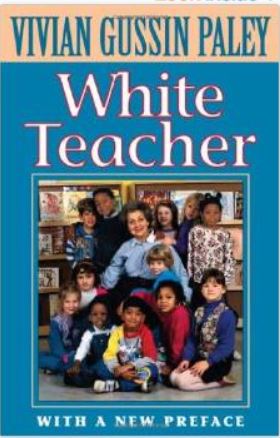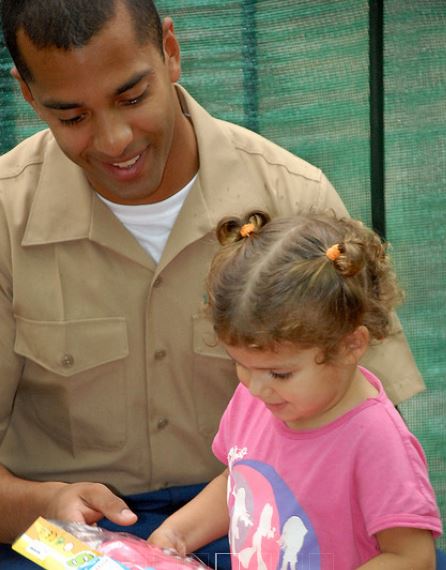Racism exists.
We live in a soup of roiling, boiling hatred based on one’s perceived skin color. And that hatred starts young.
Children are not born racist. It is taught. Dylann Roof was not born a racist. He was taught. Are you teaching your children to be racist?
Research indicates that children develop racist attitudes at early ages. Young children notice skin color differences between the ages of two and four and come to identify with their own racial group. (Van Ausdale & Feagin, 2001). They also become aware that some differences are valued and confer privilege while others do not (Hohensee & Derman-Sparks, 1992; Howard, 1999; Tajfel, 1970).
Initial discomfort with and fear of those who are different is considered pre-prejudice (Derman-Sparks & ABC Task Force, 1989). According to Katz (1982) “…it appears that predispositions acquired at early developmental levels may lay a potent foundation for later racism” (p. 18). Strech (1994) agrees and warns that the “primary years are crucial for dispelling existing stereotypes” because “…racial attitudes tend to maintain constancy after age 9 unless a life-changing event occurs” (p. 20).
Parents, and later peers, are one of the main sources of racial attitudes in children, and by school age “every child carries at least some stereotyping” even in progressively liberal communities (Beswick, 1990, p.1). These racist attitudes are not necessarily based on actual experience, but are culturally transmitted through institutional racism. Byrnes and Jones (1985), in a study of a rural school that was totally white, found that the children already knew many racial stereotypes and when shown pictures of children with different skin colors indicated they would prefer to play with children like themselves. They were uncomfortable talking about African-Americans, but often teased each other about skin color during play.
Byrnes and Jones found that the students learned their views not only from their parents, but also from television and films. Many researchers have noted that racism is present in many cartoons and movies aimed at children, but it is frequently quite subtle (Roderick, McClure & Crazy Horse, 1998; Solorzano & Yosso, 2001). Giroux (1995), for example, analyzed Disney films and found them to project many racial stereotypes, often through animal characters, such as in the behavior of the crows in the children’s classic Dumbo.
A troubling finding in Byrnes’ and Jones’ study was that at this school teachers, although they did not allow prejudiced remarks in the classroom, did not confront the racial attitudes of the students, nor use teaching materials that illustrated diversity. This research shows that teachers cannot just assume that their students hold non-racist attitudes. Rather they need to recognize that racist attitudes are part of our society and cannot just be hushed or ignored. This is why it is critically important for white teachers in white schools to address racial discrimination.
 Developing a non-racist identity is a slow, never-ending process. It is full of risks, challenges, and set backs, and teachers, who are struggling to address racism with their students, should never feel embarrassed or defeated. Vivian Paley in her book White Teacher has bravely documented her own passage through these stages. In the beginning like many of us, she tried to be colorblind. She writes in the preface, “…it was more comfortable to pretend the black child was white.” (2000, p. xvii). It took a black parent to awaken her to the positive effect of talking about skin color. “It’s a positive difference, an interesting difference, and a comfortable natural difference. At least it could be so, if you teachers learned to value differences more. What you value, you talk about.” (p. 131).
Developing a non-racist identity is a slow, never-ending process. It is full of risks, challenges, and set backs, and teachers, who are struggling to address racism with their students, should never feel embarrassed or defeated. Vivian Paley in her book White Teacher has bravely documented her own passage through these stages. In the beginning like many of us, she tried to be colorblind. She writes in the preface, “…it was more comfortable to pretend the black child was white.” (2000, p. xvii). It took a black parent to awaken her to the positive effect of talking about skin color. “It’s a positive difference, an interesting difference, and a comfortable natural difference. At least it could be so, if you teachers learned to value differences more. What you value, you talk about.” (p. 131).
Reading Paley’s five year struggle to deal with her own racism, can help teachers realize that we are all on a personal journey in self-awareness, and each step we take toward developing a non-racist attitude is a step toward improving the attitudes of our students. As Paley recognizes it is not easy to lay aside, “the fears and prejudices, apprehensions and expectations, which have become a carefully hidden part of every one of us” (p. xx). But as we look at the tragic result of racism in Charleston, it is essential that we try. [Excerpted from “Addressing Racism” by Joan Koster)
What do you know about how children become racist?
Research parents and teachers should read:
Delpit, L. (1995). Other people’s children. New York, NY: New Press.
Derman-Sparks, L. & the A.B.C. Task Force. (1989). Anti-bias curriculum: Tools for empowering young children. Washington, DC: National Association for the Education of Young Children.
Paley, V. (2000). White teacher. Cambridge, MA: Harvard University Press.
Van Ausdale, D., & Feagin, J. (2001). The first R: How children learn race and racism. Lanham, MD: Rowman & Littlefield.



